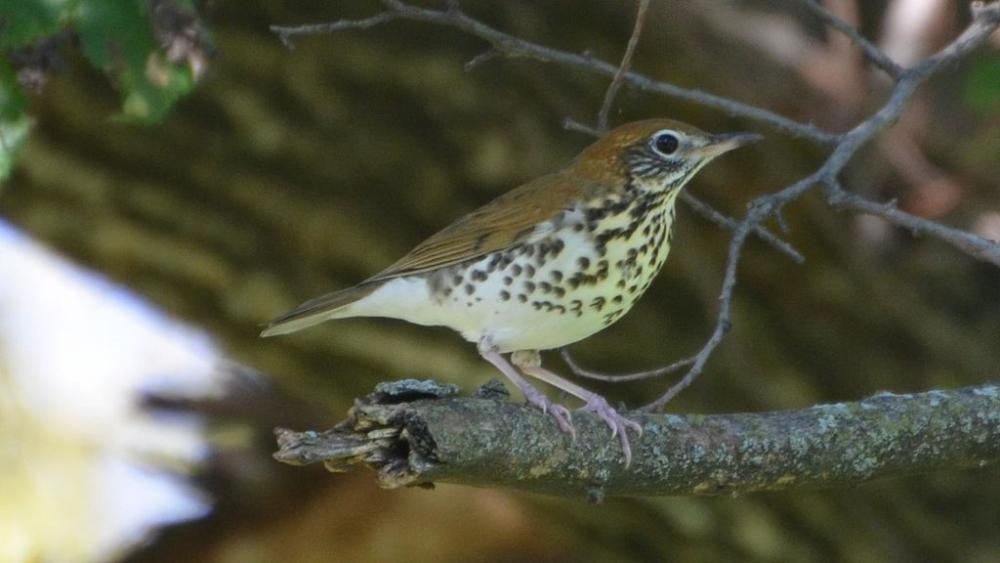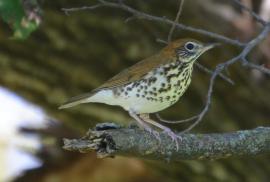Guide to Boreal Birds
Overview
In the East, this is the most familiar of our spotted brown thrushes, and the only one that nests regularly in the vicinity of houses. The Wood Thrush has one of the most beautiful songs of any North American bird. Thoreau wrote of it: "Whenever a man hears it he is young, and Nature is in her spring; wherever he hears it, it is a new world and a free country, and the gates of heaven are not shut against him."
Description
8" (20 cm). Starling-sized. Brown above, bright rusty color on head, and white below with large blackish spots. Other brown thrushes have finer spotting on breast.
Voice
A series of rich, melodious, flute-like phrases; call a sharp pit-pit-pit-pit.
Nesting
4 greenish-blue eggs in a cup of grass and twigs, reinforced with mud and lined with fine grass and rootlets, placed in a bush or sapling.
Habitat
Moist, deciduous woodlands with a thick understory; also well-planted parks and gardens.
Range/Migration
During winter, the Wood Thrush is most common in primary forests along both coasts of Central America. Unfortunately, coastal primary forests are disappearing at an alarming rate. In United States, forest fragmentation has greatly reduced the amount of breeding habitat and made this species more vulnerable to cowbird parasitism. Wood Thrushes are primarily trans-Gulf migrants, spending considerable time fattening up on fruits before attempting to cross the Gulf. Upon arrival along the U.S. Gulf coast, they usually stop for two or three days to feed before continuing northward. One population moves quickly along the east coast, while another pulse of birds pushes northward through the Mississippi River valley.
Breeds from Manitoba, Ontario, and Nova Scotia south to Florida and Gulf of Mexico. Winters in tropics.



